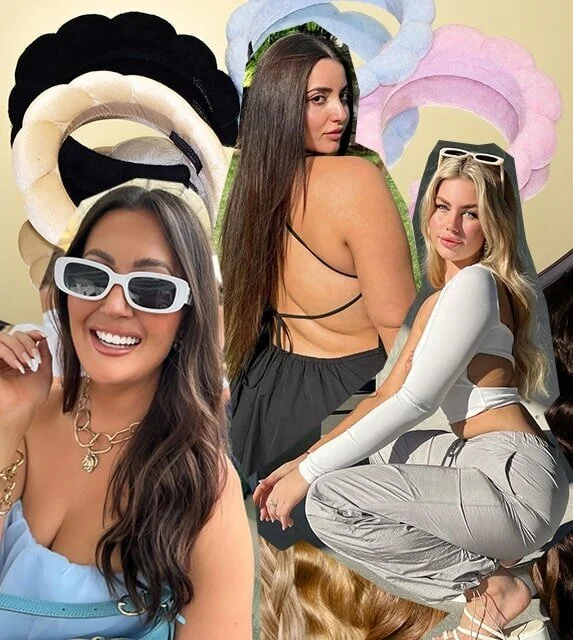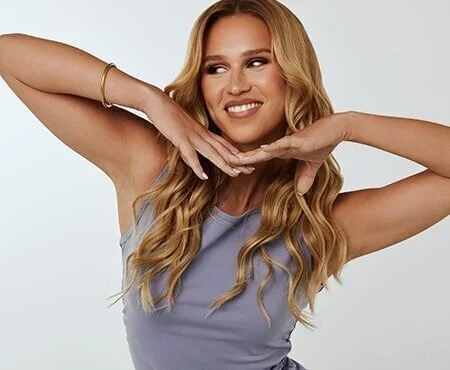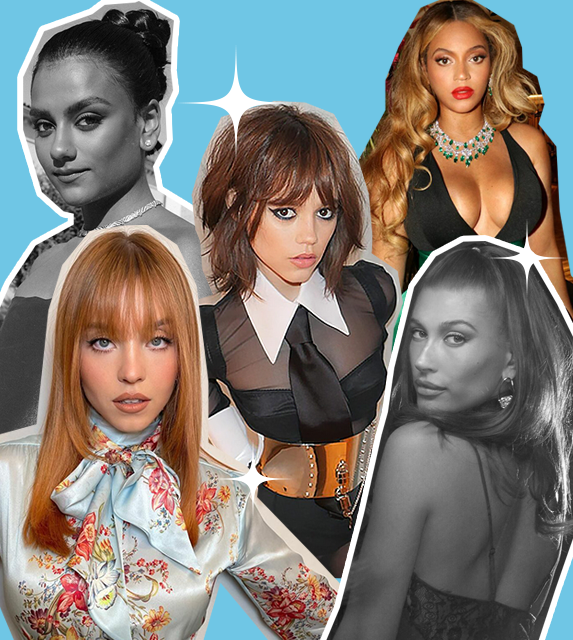Hair Weave Explained
When it comes to beauty treatments and fashion accessories, hair styles can often do double duty, as hair offers a great variety to choose among. Each year, individuals spend countless hours and sums of money in order to achieve a certain look desired.
While hair may seem frivolous on the surface, it can play a major role in one’s self-confidence and self-esteem (Science Letter, 2004). Studies have also suggested that hair loss can be a contributing factor in the development of low self-esteem and depression, leading to a lower quality of life at times (Grimalt, 2005).

However, if an individual feels confident in how they look, it can cross over into achieving success in other realms of their lives. Fortunately, there are a great number of options to choose from when it comes to hair. From color and length, to updo’s and undercuts, the possibilities are nearly endless.
However, regardless of the technique and trend desired, it is important to choose quality services, products, and to practice regular maintenance to allow the results to last as long as desired.
Gaining Length
If longer hair is what one desires, there are several options to choose from, including supplements that promise to improve the rate of hair growth, to wigs which do not always look “natural.” An additional choice is actually a variety of techniques known as a weave.
But what is a hair weave? In essence, a weave is the addition of hairs, which can be real or synthetic, and applied either in rows or individually. It is important to research the technique prior to application to ensure that the hair is long enough, has sufficient strength to support the additional weight of the newly added hair, and is in good enough shape.

Paying attention to the technique used is essential in preventing injuries to either the hair or scalp, which can occur during the attachment phase or due to stress from wearing the same hair style over a long period of time. Such hair loss, known as traction alopecia, can occur either along the front hairline or above the ears which is due to the wearing of certain tight hair styles worn for a prolonged time, such as repeatedly wearing weaves (Chiang, Samrao, & Mirmirani, 2010)
Weave Techniques
Wondering how to weave in hair extensions? There are a great number of application techniques that allow for an individual to acquire longer hair in less than a day. From sew-in, clip-in, quick weave, and glue-in methods, there is a weave installation for just about anyone.
Some involve the use of glue, while other utilize special braiding or weaving methods to attach either individual or sections of hair, which can be made of real or synthetic hair.
Strand Method
One weave technique, known as the “strand by strand” method involves small segments of hair, either real or artificial, which can be purchased and applied in single strips. By applying the additions placed near the root of the hair, it creates a single strand, which provides more freedom in hairstyles as compared to track weaves, and as such can be worn neatly in a high ponytail or bun.
The strand by strand technique provides durability, as long as the additions are well cared for after installation. However, the technique is often time-consuming due to the application method of individual strands.

Fusion Methods
Hot fusion is another technique, which involves using a special adhesive or glue to attach the ready-made hair extensions to tiny strands of one’s own natural hair. The hot fusion method lasts between three to five months, with the application and installation time ranging from four to six hours.
Cold fusion is another option, but unlike hot fusion, does not require the use of heat or glue, but rather utilizes beads to secure the weave into place, and as such allows the sections to be reused.
However, in exchange for the lack of glue required, the hair weave sections used tend to be very expensive and application time can take up to eight hours to complete, depending on the number of links or weaves desired.
Sewing Methods
Micro crochet and Italian weaving are two additional techniques, with the duration of each lasting up to a year.
Considered a safer substitute to the hot or cold fusion application techniques, micro crochet weaves do not require glue or beads to secure the sections, but rather are stitched with the use of a latch hook crochet needle and weaved into the existing hair, which can take up to eight hours. A technique similar to micro crochet is known as Brazilian knots or Italian weaving, and involves no braiding, glues, beads, or special styling products, but rather are applied strand by strand with a special thread technique.

While the Brazilian knot method allows for a wide amount of freedom when it comes to types and colors of hair to choose among, the styling and installation time can last up to fifteen hours.
Wefting
Another method for attaching weaves is known as wefting, which consists of a long strip of hair that has a seam at the top, along which clips are attached in order to secure the section to one’s hair. A weft can allow hair to appear both thicker and longer, and is popular among young adults due to the versatility in colors and lengths available.
Additionally , both synthetic and human hair options are available for hair weft curtains. Unlike many of the other options for hair extensions, including weaves, hair wefts are usually consist of long sections that are either glued or clipped into one’s hair, rather than the time-consuming options that utilize individual hair application techniques or sewing the extensions into the existing hair.
Application
Wefts are available in a variety of lengths, and if made from human hair, it can be cut, straightened, dyed, curled, or treated as real hair. If the wefts are made from synthetic hair, they can be treated similar to those made of human hair, but may break down or not react the same as natural hair when colored or have other styling chemicals applied, so caution should be given when deciding which, real or synthetic, hair type is desired.

The versatility of wefts make them a popular choice for people who want either a long term or short term change in appearance. Well crafted wefts can be used repeatedly, as well as for temporary applications, such as party costumes, theater performances, or formal events.
Finding a weft that works with the existing hair color, texture, and appearance is key in attaining a natural appearance.
But how are weaves attached? As with the other types of weaves and hair extensions, there are a variety of methods available for attaching wefts to an individual’s own hair. One of the more common methods involves applying a hair glue to the hair and securing it into place.
Other attachment techniques involve bonding or sewing/weaving applications which attach the track or weft to the hair using a stitching method. If stitching or gluing is not desired, the wefts can be secured for temporary uses by clipping the sections into the hair with special snap clips sewn into the weft.
If the gluing method is desired, it is suggested that a specialized glue is utilized, making sure that it does not contain formaldehyde to reduce any possible health complications. Additionally, the use of household “super glue” is not recommended for use in securing the wefts to the hair or scalp.
For temporary application needs, double-sided tape can be used to secure the wefts into place. Such a technique is suggested for short-term uses as the adhesive material typically lasts for up to two weeks, depending on the quality and maintenance of the hair sections.
If handmade hair wefts are used for the extension pieces, they may require a skin weft, which is done using a special skin weft sealing tool, which looks similar to a hair straightener.
Types of Wefts
How is weave made? Well, high quality weaves or wefts, made from real human hair are referred to as Remy hair, which retains the cuticle layer from the original donor, making the appearance more natural than those made from synthetic hair.
Remy hair is premium human hair in which a special processing method is utilized to minimize the possible stripping of the hair’s natural cuticle while keeping the natural look by mimicking the cuticle alignment of naturally growing hair through maximizing the number of cuticles that run all in the same direction.
Despite the material, either real or synthetic, most wefts are coated with a sealing material, such as polyurethane to keep the shiny appearance and allow for the strands to me more manageable and lifelike. In order to prevent shedding after application, wefts can be sealed with a special water resistant sealant, which can reduce the amount of shedding on well constructed wefts.

Finding the right weft to match one’s original hair texture can be easy with the wide variety of Remy and synthetic hair extensions. There are wefts that resemble natural African American curled hair, that are made from hair that has been collected directly from donors, and can be brushed out to obtain a natural look.
Wefts also can come in a variety of body and waves, from silky soft waves, to deep waves with a tighter textured natural look, high quality extensions can return to the natural texture after washing.
Caring for Weaves and Wefts
To reduce the damage and additional costs associated with premature replacement of weaves or wefts, it is important to take proper care to minimize the damage and optimize the growth of one’s natural hair.
Some tips for maintenance include deep conditioning prior to attaching the weft, avoiding the glue-in weaves, and reduce the number and quantity of products used on the hair, which includes styling sprays and curling or flat irons. One easy way to keep the maintenance costs down and maintain the look of the weft is by using dry shampoo.
Dry Shampoo for Weft Maintenance
While it may sound unsanitary to go without shampooing and washing one’s hair in the traditional manner, it wasn’t until the 1970s that daily shampooing became common practice in the United States.

Proponents of the “No Poo” method suggest that it is the healthiest way to take care of one’s hair, including those who use hair extensions. Some of the positive aspects associated with the “No Poo” approach to hair care includes:
1st: Saving money since shampoo can be expensive,
2nd: Minimizing the amount of chemicals used, which can irritate and dry out the scalp and hair,
3rd: Reduce the exposure to chemicals that could be hazardous to one’s health, and
4th: Since the human body naturally produces oil to condition and keep hair healthy, daily shampooing can upset the natural balance, leading to more oil production.
When used on naturally curly hair or weaves, the absence or reduced amount of shampoo used on a regular basis can prevent the dryness that may accompany the use of commercial shampoos, as many contain sulfates, which can be very damaging and drying to hair.

Using conditioner only rather than shampoo, users can reduce the exposure to harsh ingredients which strip hair of the natural oils, which can damage the hair cuticle, making it more prone to breakage.
How to “No Poo”
In order to make the transition from the practice of regularly using shampoo to using it either sparingly or not at all, it can be a challenge. However, there are a couple of methods to make the switch easier.
A few times a week, it is suggested to clean the hair and scalp with a mixture of baking soda and water, with a recommended ratio of 1 Tbsp baking soda to 1 C water. Place the mixture in a bottle and shake well before applying. After wetting the hair, apply the baking soda mixture and rub the scalp in a circular motion, focusing on the scalp rather than the hair. Rinse well and follow with a mixture of 2 Tbsp apple cider vinegar with 1-2 cups water, which will act as a conditioner.
After following the No Poo schedule, users usually experience more body, less oily hair, less frizz, and more savings since the shampoo and conditioner replacements are often a fraction of what traditional products cost in the stores.
References Chiang, C., Samrao, A., & Mirmirani, P. (2010). Damaging hair care techniques. Dermatology Nursing, 22(4), 21-25. Grimalt, R. (2005). Psychological aspects of hair disease. Journal of Cosmetic Dermatology,4(2), 142-147. doi:10.1111/j.1473-2165.2005.40218.x Hair loss: Various treatments available for female hair loss. (2004, November 12). Science Letter, 635





